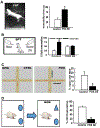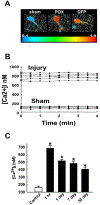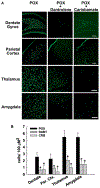Novel therapeutics for treating organophosphate-induced status epilepticus co-morbidities, based on changes in calcium homeostasis
- PMID: 30872159
- PMCID: PMC6742584
- DOI: 10.1016/j.nbd.2019.03.006
Novel therapeutics for treating organophosphate-induced status epilepticus co-morbidities, based on changes in calcium homeostasis
Abstract
Organophosphate (OP) chemicals include pesticides such as parathion, and nerve gases such as sarin and soman and are considered major chemical threat agents. Acute OP exposure is associated with a cholinergic crisis and status epilepticus (SE). It is also known that the survivors of OP toxicity exhibit neurobehavioral deficits such as mood changes, depression, and memory impairment, and acquired epilepsy. Our research has focused on addressing the need to develop effective therapeutic agents that could be administered even after prolonged seizures and would prevent or lessen the chronic morbidity associated with OP-SE survival. We have developed rat survival models of OP pesticide metabolite paraoxon (POX) and nerve agent sarin surrogate diisopropyl fluorophosphate (DFP) induced SE that are being used to screen for medical countermeasures against an OP attack. Our research has focused on studying neuronal calcium (Ca2+) homeostatic mechanisms for identifying mechanisms and therapeutics for the expression of neurological morbidities associated with OP-SE survival. We have observed development of a "Ca2+ plateau" characterized by sustained elevations in neuronal Ca2+ levels in OP-SE surviving rats that coincided with the appearance of OP-SE chronic morbidities. These Ca2+ elevations had their origin in Ca2+ release from the intracellular stores such that blockade with antagonists like dantrolene, carisbamate, and levetiracetam lowered OP-SE mediated Ca2+ plateau and afforded significant neuroprotection. Since the Ca2+ plateau lasts for a prolonged period, our studies suggest that blocking it after the control of SE may represent a unique target for development of novel countermeasures to prevent long term Ca2+ mediated OP-SE neuropsychiatric comorbidities such as depression, anxiety, and acquired epilepsy (AE).
Keywords: Calcium; Carisbamate; Cell death; Cognitive deficits; DFP; Dantrolene; Depression; Levetiracetam; Paraoxon; Status epilepticus.
Copyright © 2019 Elsevier Inc. All rights reserved.
Figures






References
-
- Foxell JW, Some Previously Discounted Terrorism Scenarios That Seem More Likely in Light of the Attacks of September 11, 2001. American Foreign Policy Interests: The Journal of the National Committee on American Foreign Policy, 2002. 24(5): p. 427–450.
-
- Pérez-Peña R and Barry E, U.K. Charges 2 Men in Novichok Poisoning, Saying They’re Russian Agents, in The New York Times; 2018.
-
- McCurry J and Graham-Harrison E, Kim Jong-un’s half-brother dies after ‘attack’ at airport in Malaysia, in The Guardian; 2017.
Publication types
MeSH terms
Substances
Grants and funding
LinkOut - more resources
Full Text Sources
Miscellaneous

